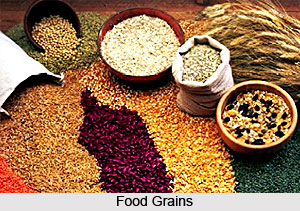 Historians have mentioned several features of agriculture in Mughal India. Agriculture was one of the most significant factors forming the basis of the strong economy. A significant feature of agriculture in Mughal India has been the huge number of crops cultivated by the peasants. Another most notable feature of the peasant life of the Mughal rule was the appropriate combination of purely agricultural work with manufacturing processes. Further, the destruction of the rural cottage industries formed one of the violent chapters in the economic history of British India. Various evidences proved that a number of rural industries flourished during the Mughal times. During the Mughal rule, cultivation of roses received strong impetus. It is because of the fact that in the 17th century the demand for rose-water and rose-essence was comparatively high.
Historians have mentioned several features of agriculture in Mughal India. Agriculture was one of the most significant factors forming the basis of the strong economy. A significant feature of agriculture in Mughal India has been the huge number of crops cultivated by the peasants. Another most notable feature of the peasant life of the Mughal rule was the appropriate combination of purely agricultural work with manufacturing processes. Further, the destruction of the rural cottage industries formed one of the violent chapters in the economic history of British India. Various evidences proved that a number of rural industries flourished during the Mughal times. During the Mughal rule, cultivation of roses received strong impetus. It is because of the fact that in the 17th century the demand for rose-water and rose-essence was comparatively high.
There were actually diverse features regarding the agricultural patterns. Interestingly, many of the fruits grew wild in the jungles and they were only gathered by the poor class people for sustenance. On the other hands, melons were cultivated as seasonal crops by the peasants while trees bearing fruits like mangoes were usually planted in groves. Most of these groves belonged to the richer people and they seasonally rented them out to professional fruit-sellers or cultivators. This custom is still popular till today. Members of the upper classes possessed orchards to have fruits for their own consumption as well as for making profits. It was believed that in the case of food grains, the peasant`s part in the productive process usually ended with threshing of the corn. The milling of flour mostly by hand and rice-husking took place generally in the household of the consumer. Moreover, vegetable cultivation was also very popular during Mughal rule and it distinctively impressed the European travellers with their huge variety and abundance
As far as the cash crops were concerned not only the existing techniques, but also the conditions of transport, made it essential for definite manufacturing processes to be carried. One of the most significant village industries was sugar and gur manufacturing industry. Indian sericulture largely suffered a great decline after the decline of the Mughals. Another important aspect of agriculture in Mughal India was that peasants enjoyed a superior position to his descendent.



















